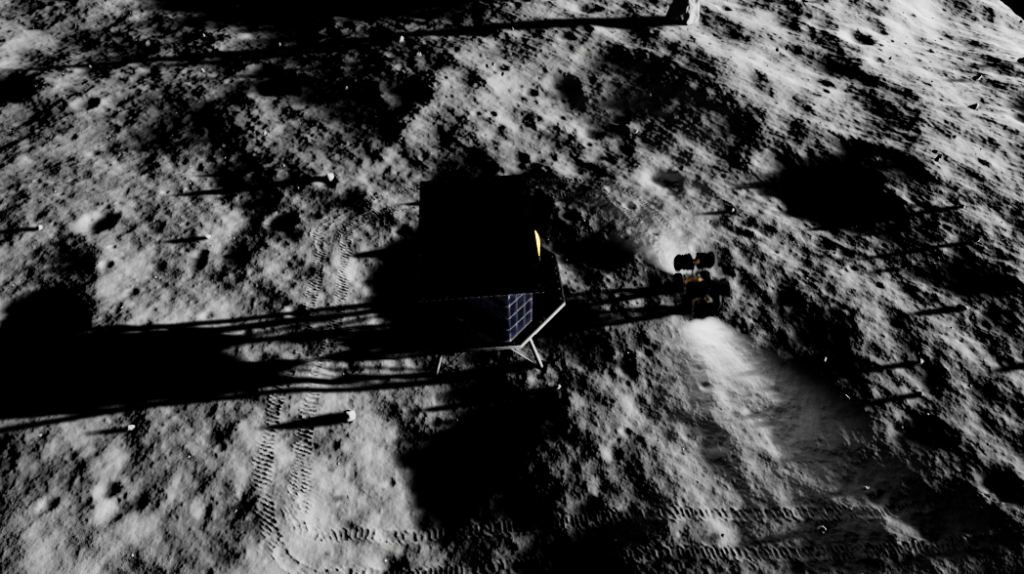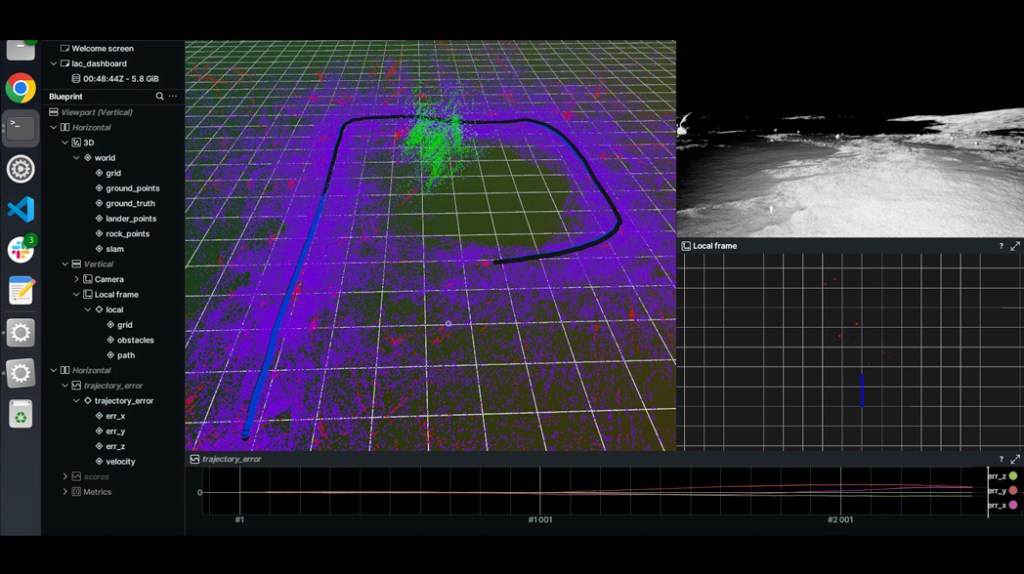NASA named Stanford University of California winner of the Lunar Autonomy Challenge, a six-month competition for U.S. college and university student teams to virtually map and explore using a digital twin of NASA's In-Situ Resource Utilization Pilot Excavator (IPEx).
The winning team successfully demonstrated the design and functionality of their autonomous agent, or software that performs specified actions without human intervention. Their agent autonomously navigated the IPEx digital twin in the virtual lunar environment, while accurately mapping the surface, correctly identifying obstacles, and effectively managing available power.

Lunar simulation developed by the winning team of the Lunar Autonomy Challenge's first place team from Stanford University.
Credit: Stanford University's NAV Lab team

Lunar simulation developed by the winning team of the Lunar Autonomy Challenge's first place team from Stanford University.
Credit: Stanford University's NAV Lab team

Team photo of NAV Lab Lunar Autonomy Challenge from Stanford University
Credit: Stanford University's NAV Lab team
/Public Release. This material from the originating organization/author(s) might be of the point-in-time nature, and edited for clarity, style and length. Mirage.News does not take institutional positions or sides, and all views, positions, and conclusions expressed herein are solely those of the author(s).View in full here.






